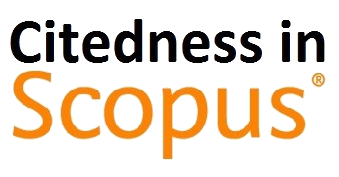Sentiment Analysis of Student Emotion During Online Learning Using Recurrent Neural Networks (RNN)
(1) Politeknik Pos Indonesia, Bandung, Indonesia
(2) Politeknik Pos Indonesia, Bandung, Indonesia
(*) Corresponding Author
Abstract
Full Text:
PDFReferences
Eko Yulianto, Putri Dwi Cahyani, and Sofia Silvianita, “Perbandingan Kehadiran Sosial dalam Pembelajaran Daring Menggunakan Whatsapp groupdan Webinar Zoom Berdasarkan Sudut Pandang Pembelajar Pada Masa Pandemic COVID-19,” JARTIKA J. Ris. Teknol. dan Inov. Pendidik., vol. 3, no. 2, pp. 331–341, 2020, doi: 10.36765/jartika.v3i2.277.
A. Muhson, “Pengembangan Media Pembelajaran Berbasis Teknologi Informasi,” J. Pendidik. Akunt. Indones., vol. 8, no. 2, 2010, doi: 10.21831/jpai.v8i2.949.
N. E. Putri and D. Iskandar, “Analisis Preferensi Konsumen Dalam Penggunaan Social Messenger Di Kota Bandung Tahun 2014 (Studi Kasus : Line, Kakaotalk, Wechat, Whatsapp),” J. Manaj. Indones., vol. 14, no. 2, p. 110, 2017, doi: 10.25124/jmi.v14i2.356.
S. Dina, “Pemerintah ungkap tantangan pembangunan infrastruktur internet,” kominfo.go.id, 2020. .
N. Girdharwal, “Emotional intelligence and happiness,” Indian J. Public Heal. Res. Dev., vol. 10, no. 10, pp. 88–92, 2019, doi: 10.5958/0976-5506.2019.02774.8.
R. Habibi, D. B. Setyohadi, and E. Wati, “Analisis Sentimen Pada Twitter Mahasiswa Menggunakan Metode Backpropagation,” J. Inform., vol. 12, no. 1, pp. 103–109, 2016, doi: 10.21460/inf.2016.121.462.
A. Chatterjee, U. Gupta, M. K. Chinnakotla, R. Srikanth, M. Galley, and P. Agrawal, “Understanding Emotions in Text Using Deep Learning and Big Data,” Comput. Human Behav., vol. 93, pp. 309–317, 2019, doi: 10.1016/j.chb.2018.12.029.
W. Van der Aalst, “Process mining: Data science in action,” Process Min. Data Sci. Action, no. April 2014, pp. 1–467, 2016, doi: 10.1007/978-3-662-49851-4.
James F. Allen, “Natural language processing,” Encycl. Comput. Sci., pp. 1218–1222, 2003.
A. Yadollahi, A. G. Shahraki, and O. R. Zaiane, “Current state of text sentiment analysis from opinion to emotion mining,” ACM Comput. Surv., vol. 50, no. 2, 2017, doi: 10.1145/3057270.
H. Shi, M. Xu, and R. Li, “Deep Learning for Household Load Forecasting-A Novel Pooling Deep RNN,” IEEE Trans. Smart Grid, vol. 9, no. 5, pp. 5271–5280, 2018, doi: 10.1109/TSG.2017.2686012.
W. Yu, I. Y. Kim, and C. Mechefske, “An improved similarity-based prognostic algorithm for RUL estimation using an RNN autoencoder scheme,” Reliab. Eng. Syst. Saf., vol. 199, no. February, p. 106926, 2020, doi: 10.1016/j.ress.2020.106926.
DOI: https://doi.org/10.30645/ijistech.v5i3.144
Refbacks
- There are currently no refbacks.
Jumlah Kunjungan:
Published Papers Indexed/Abstracted By:












